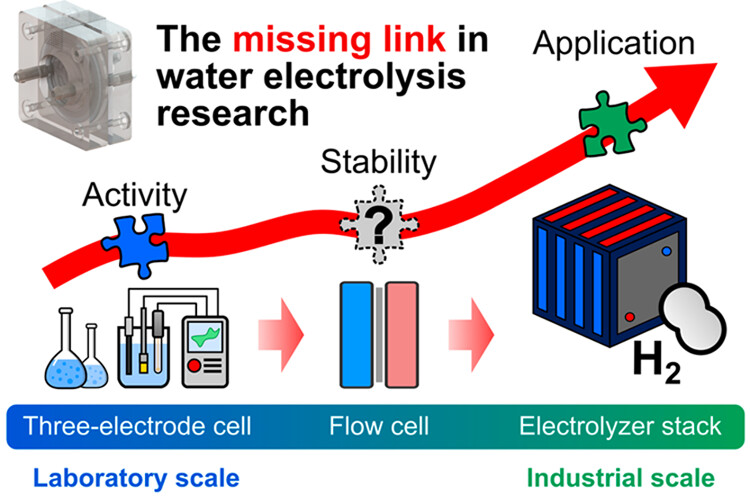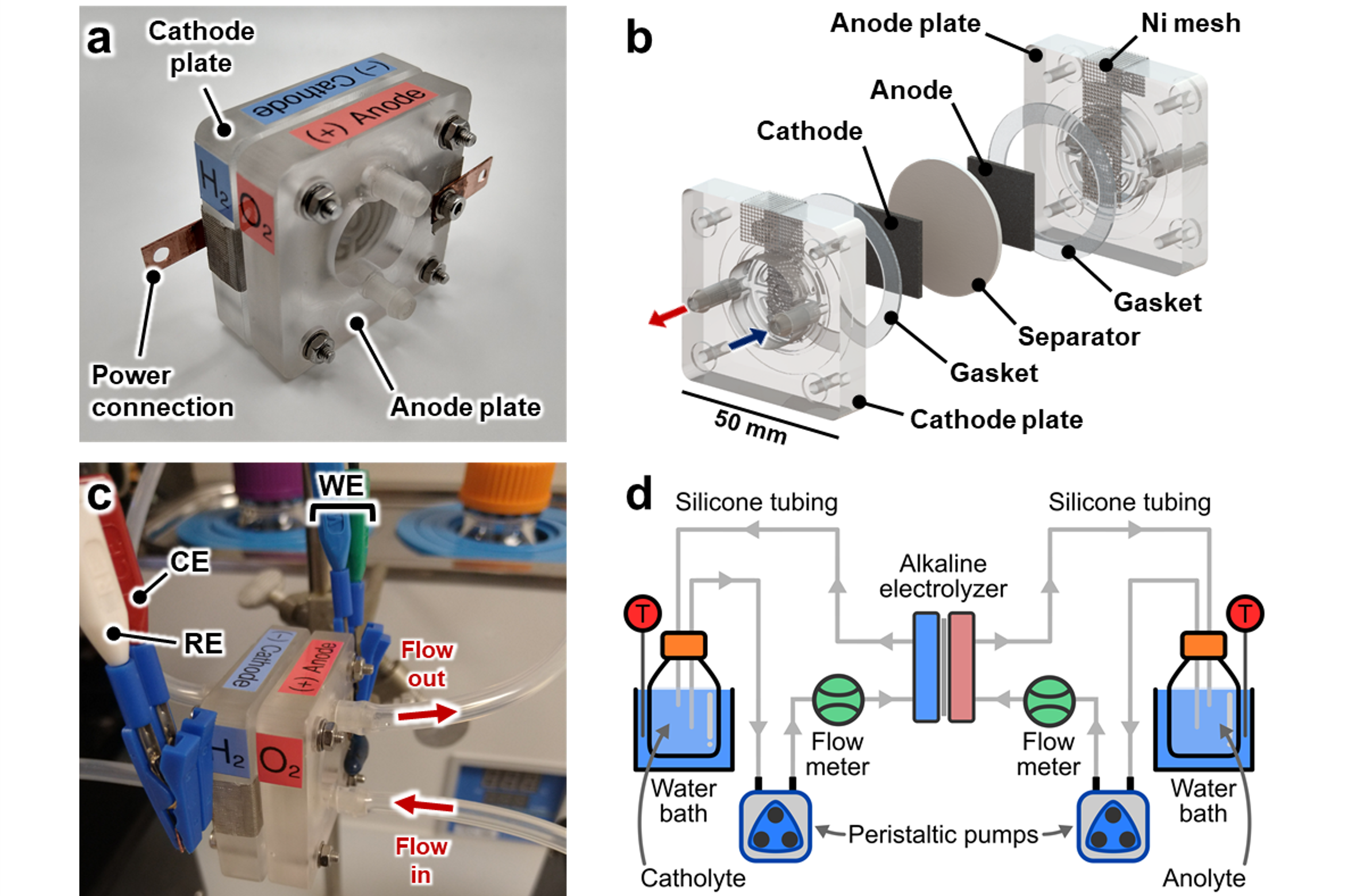Lab-scale Water Electrolyzers
Flow electrolyzers enhance reproducibility in alkaline water electrolysis
Motivation
Academic research on water electrolysis often employs three-electrode cell configurations, which do not adequately represent practical electrolyzers. The testing conditions and stability limits of electrocatalysts vary widely between laboratory and industrial environments, highlighting the need for tests under more realistic settings to fully assess component interactions and instabilities, not just those of the catalyst. Electrochemical flow cells offer a more reliable platform for such evaluations by enabling device-level testing of electrocatalysts within full-cell configurations. These cells allow for the examination of how component interactions impact overall performance, introduce new stresses, and provide a means to assess the durability of electrocatalysts at the lab scale.
My objective is to develop strategies to scale up electrocatalytic materials and conduct experiments under controlled, realistic conditions to facilitate the commercial transition of these technologies. I also aim to establish guidelines for accurate testing under such conditions.
Research Projects
To enhance reproducibility and enable fair comparisons within the alkaline water electrolysis community, we reported an electrochemical flow cell setup designed to study electrocatalytic stability in the lab. This setup serves as an intermediate step in scaling up pathways for AWE, positioned between initial three-electrode cell testing and more complex electrolyzer setups that simulate industrial operations (Figure 1).

The flow electrolyzer we developed uses a zero-gap configuration to minimize ion travel distances and enhance gas discharge. It features rigid plastic flow plates that compress the electrode-separator assembly, suitable for lab-scale experiments (Figure 2). This design accommodates Ni foam (NF) electrodes, commonly used in AWE research. Further details on the design, fabrication, operation, and troubleshooting of this device can be found in our publication.
